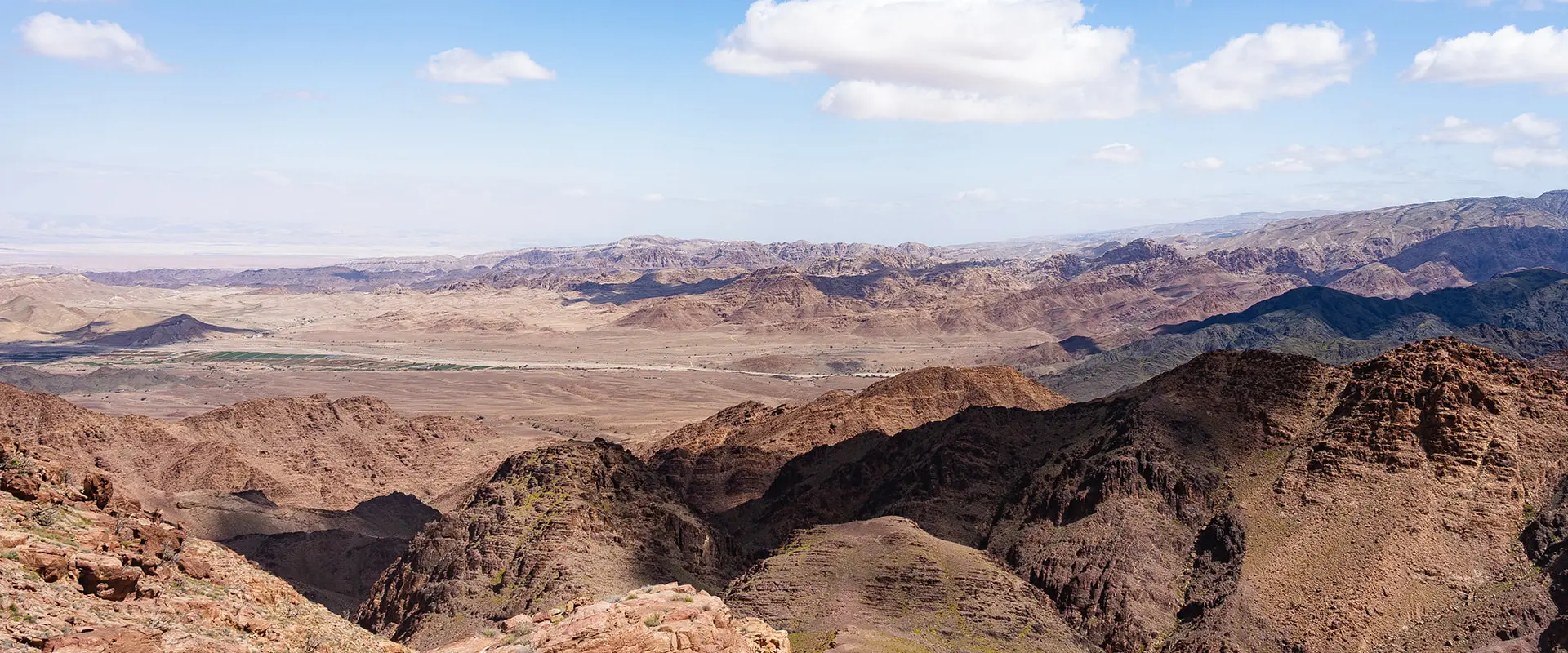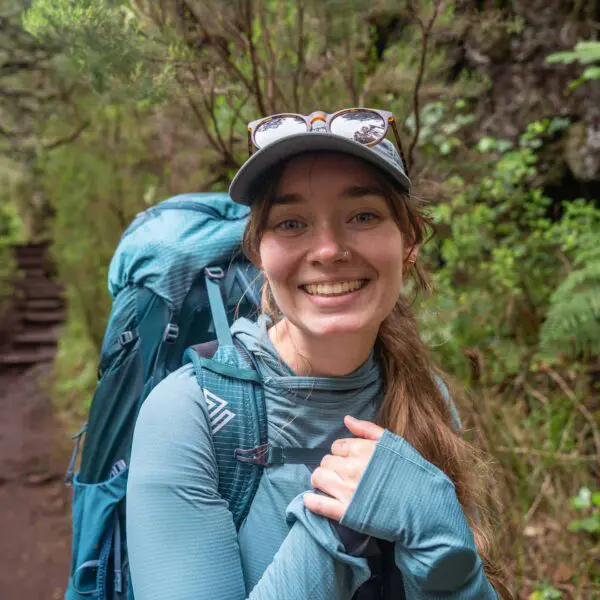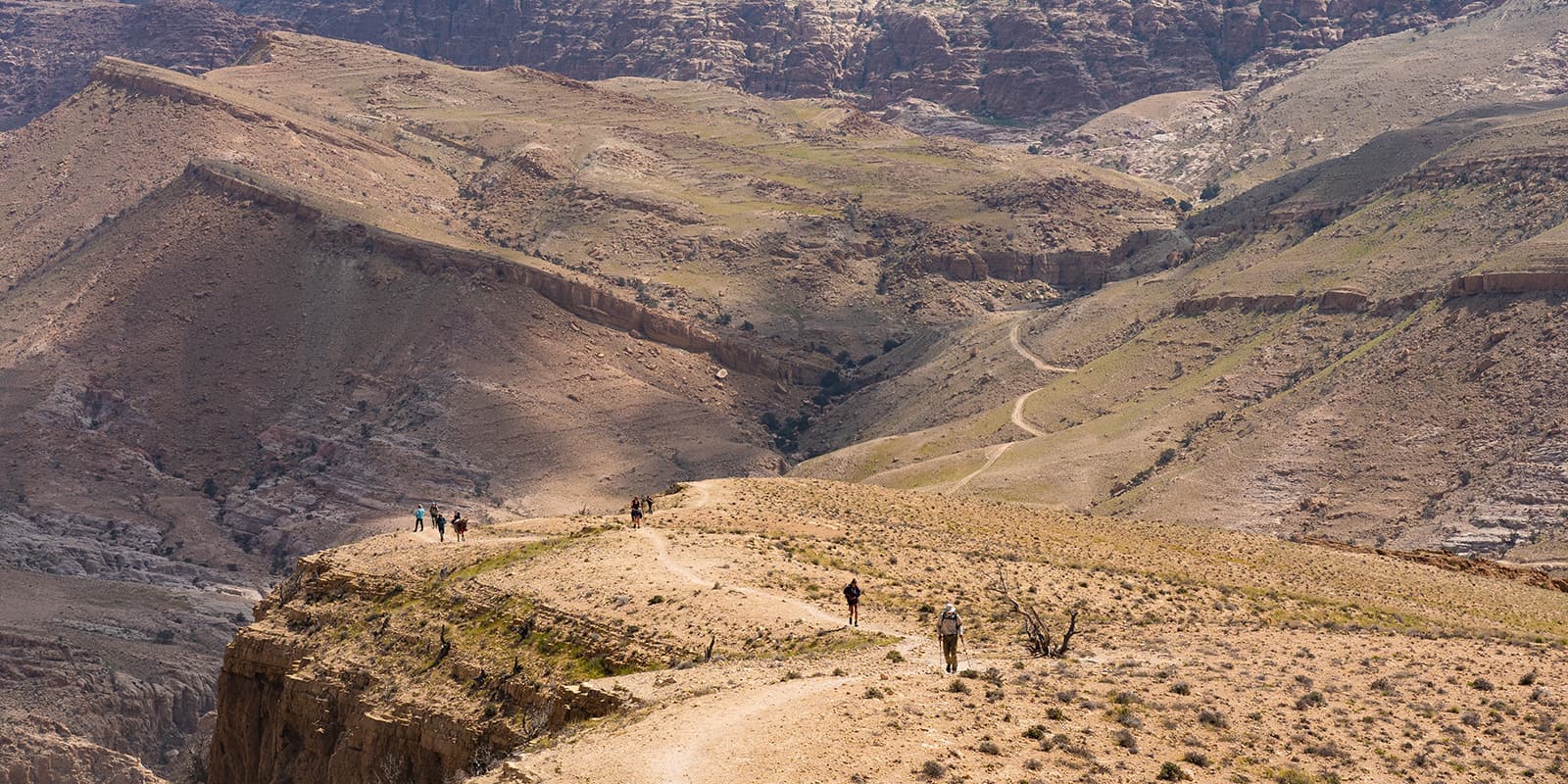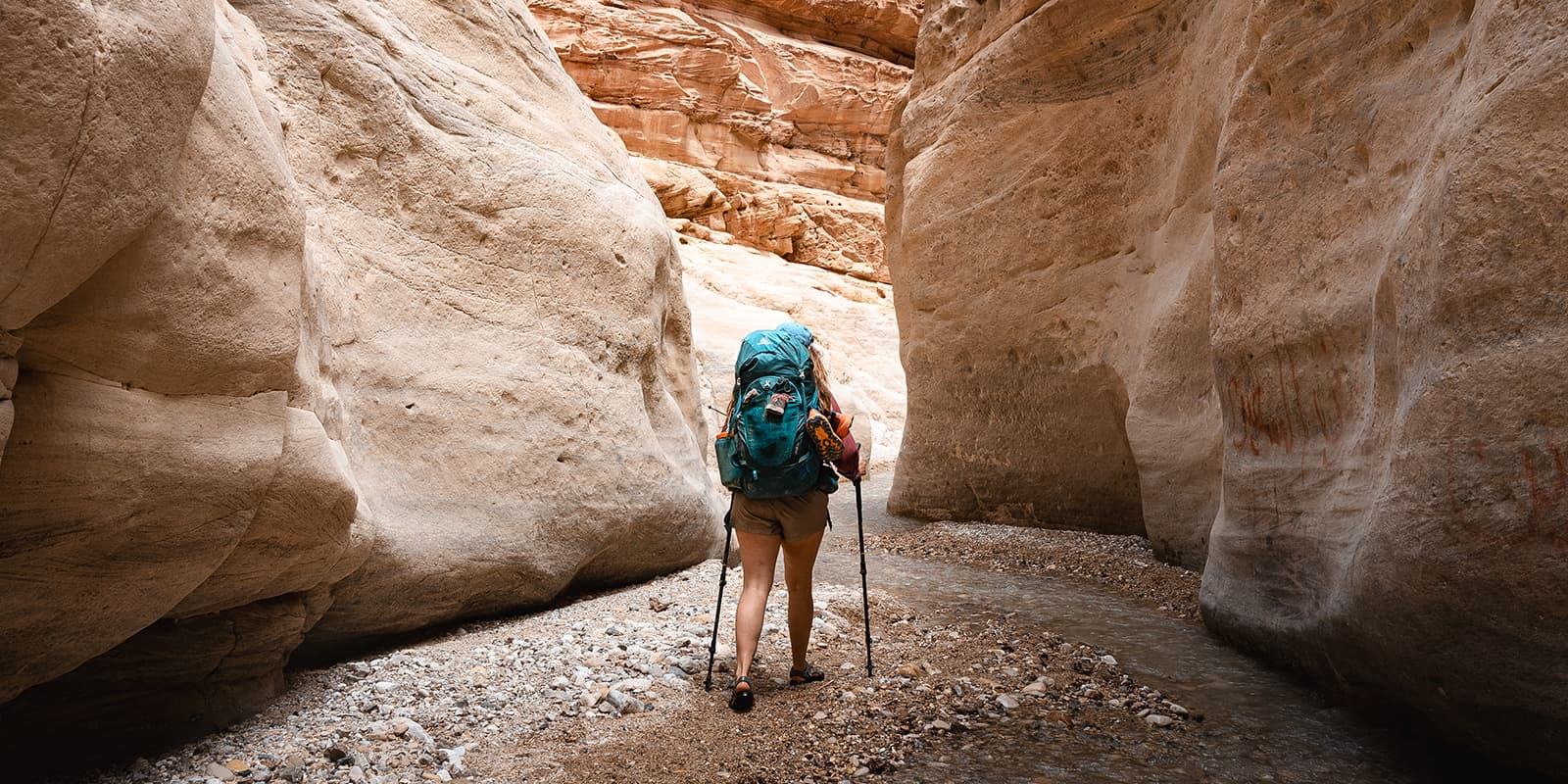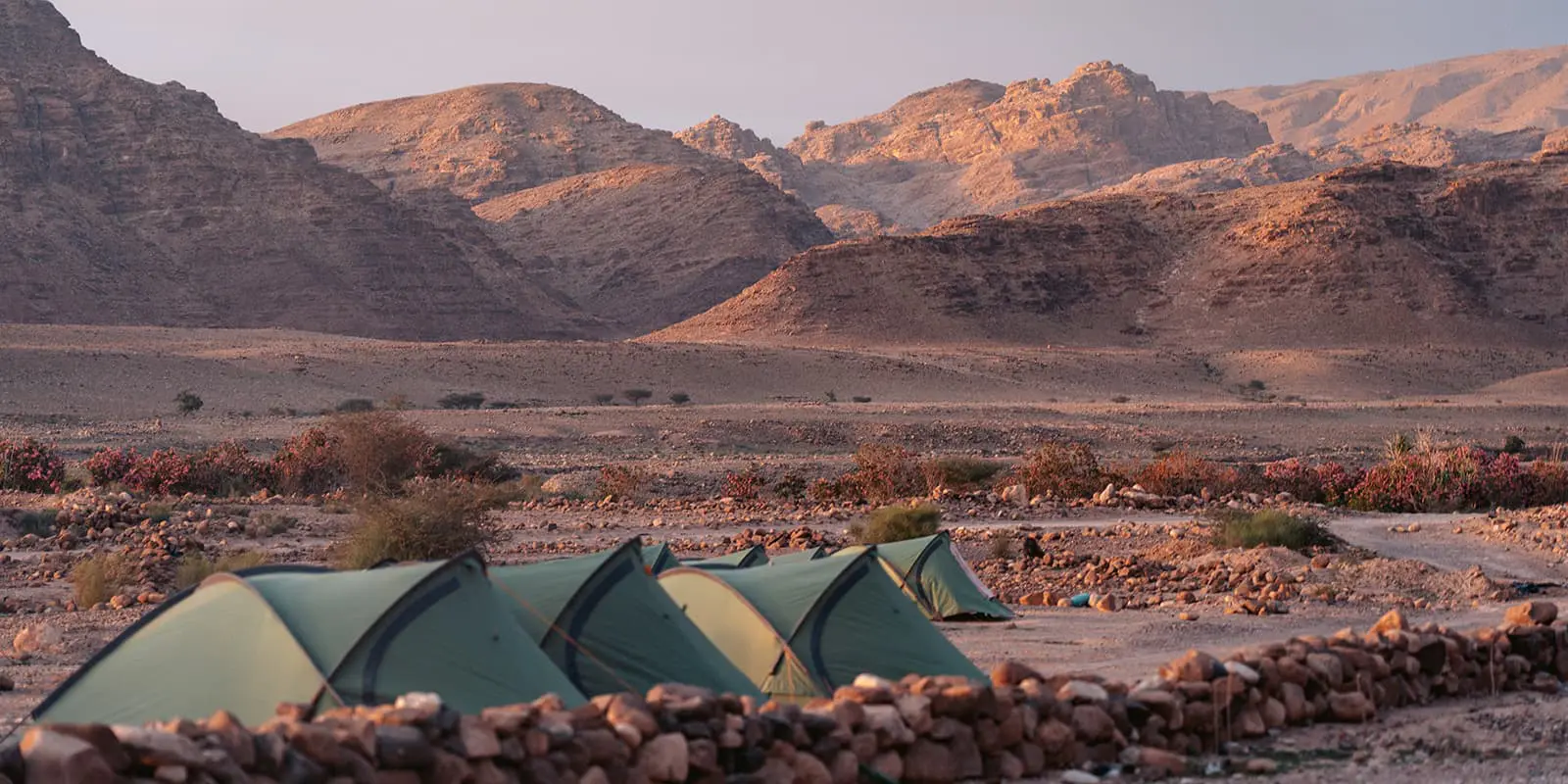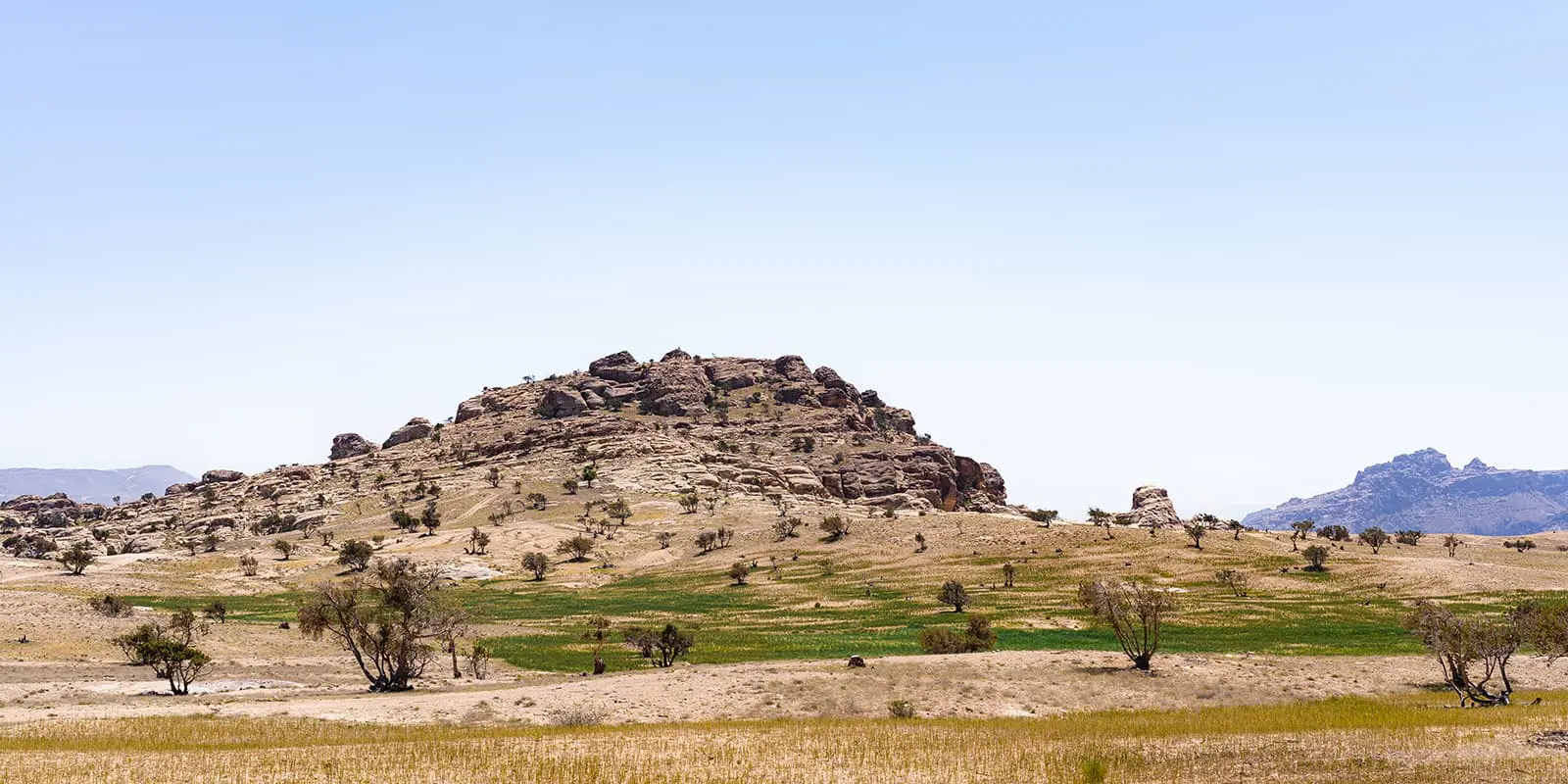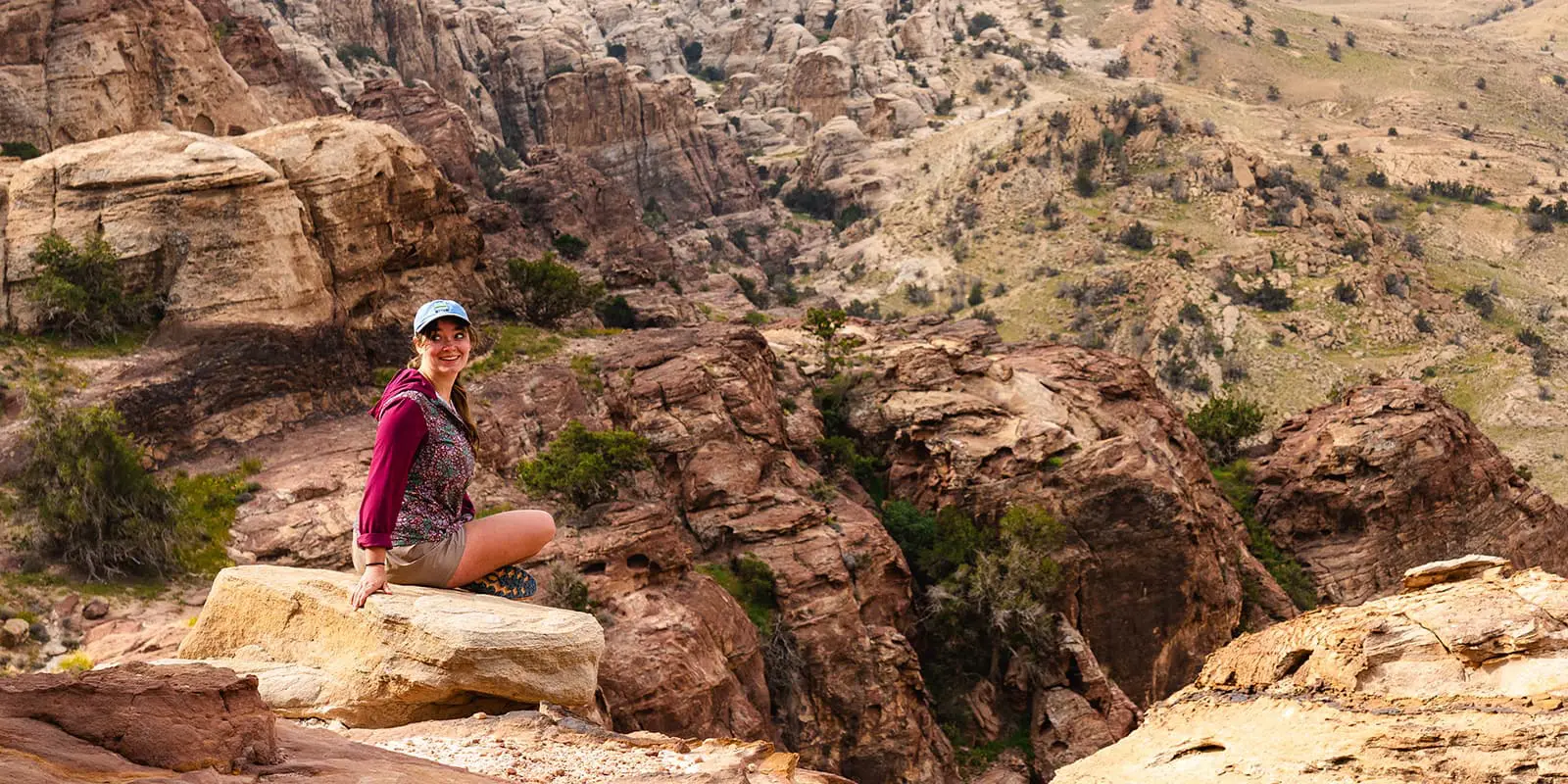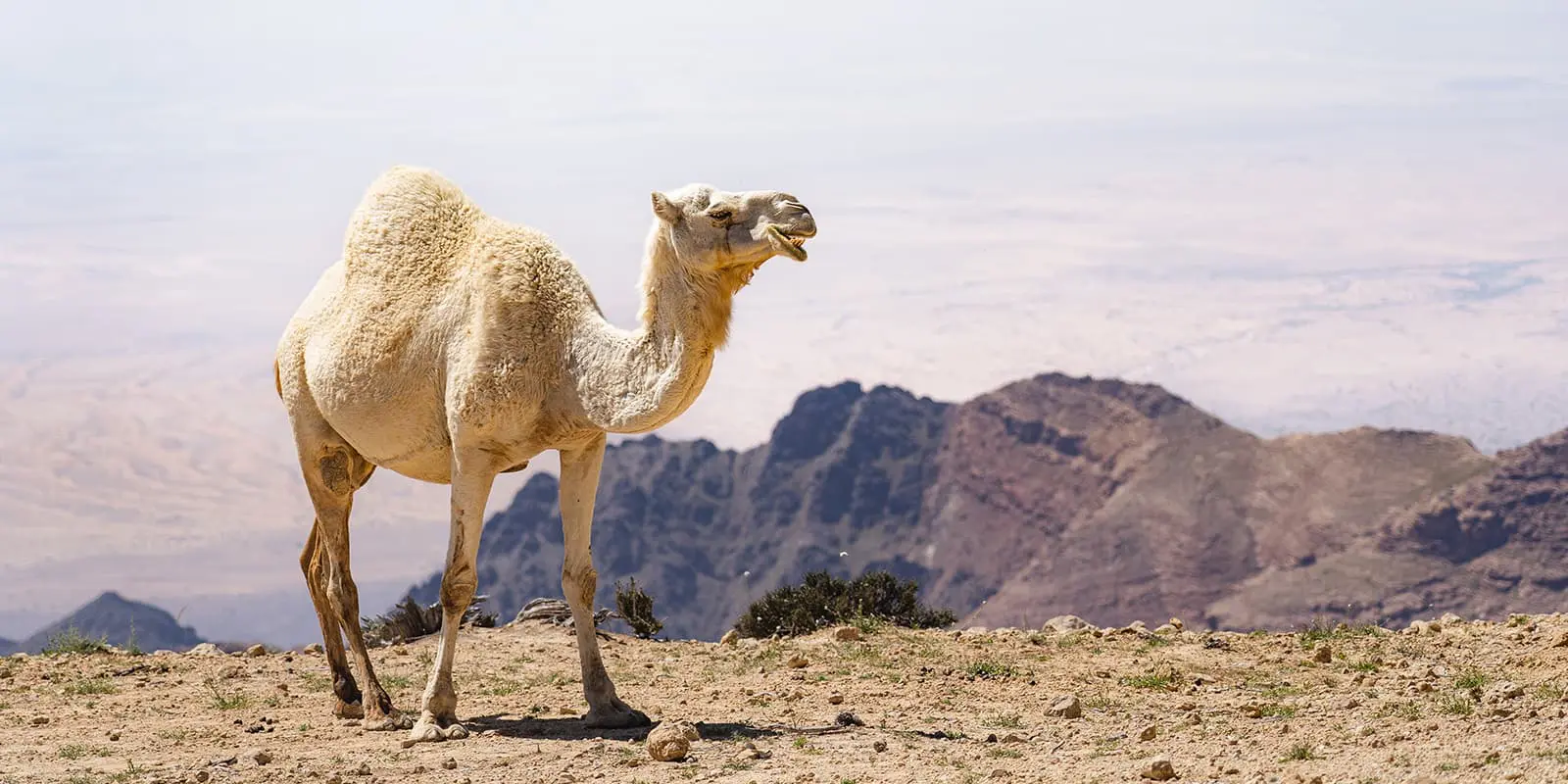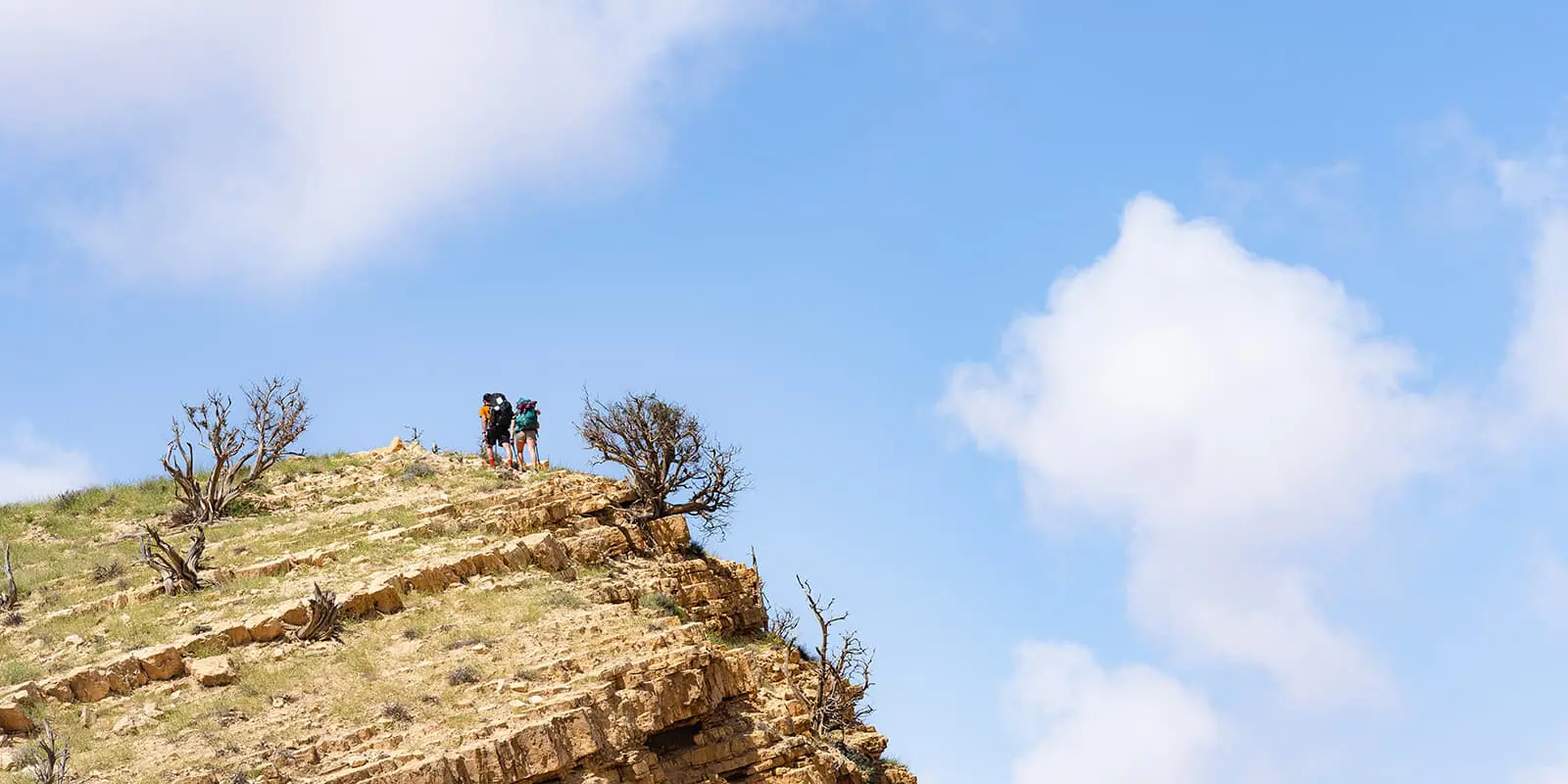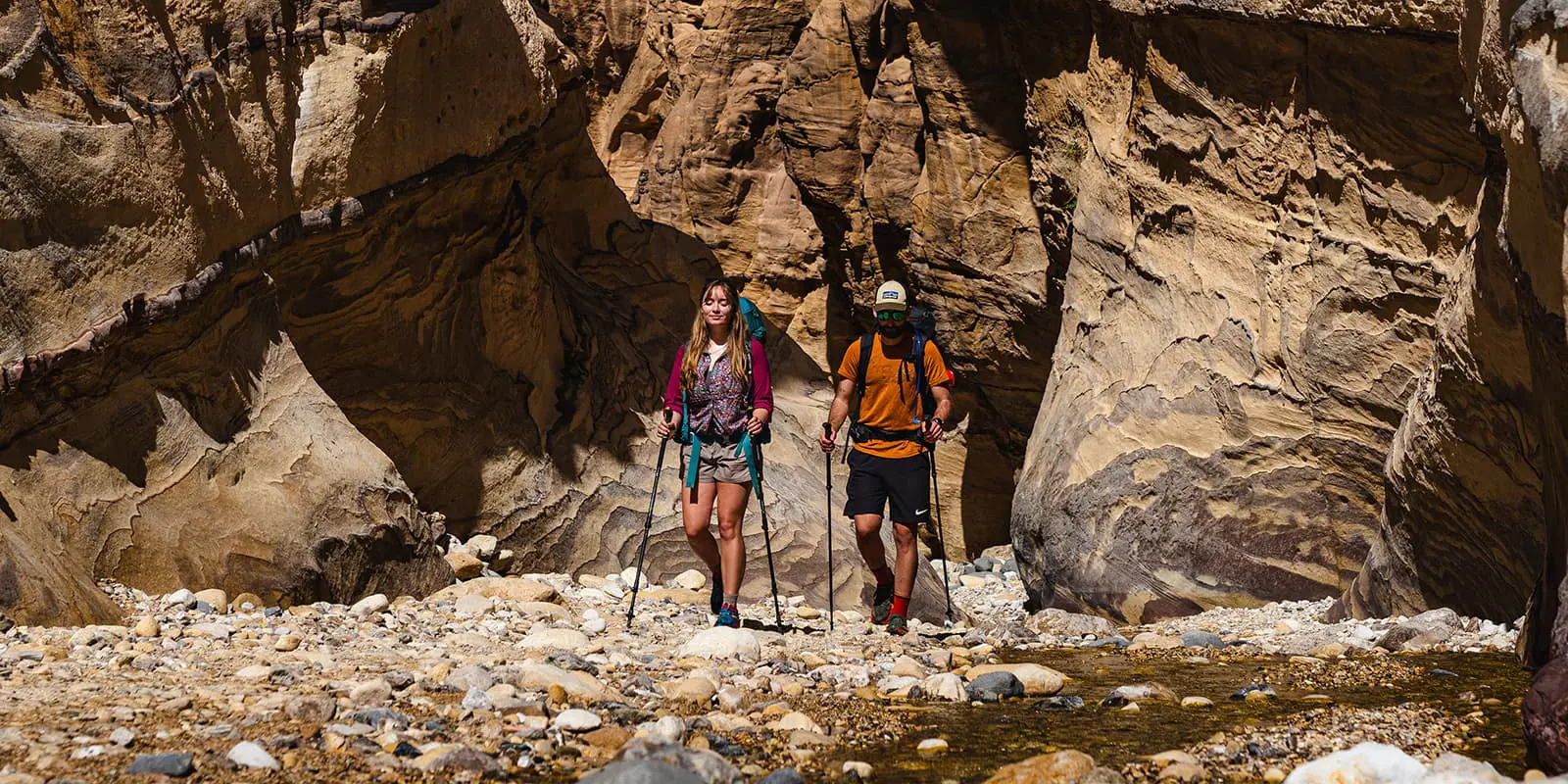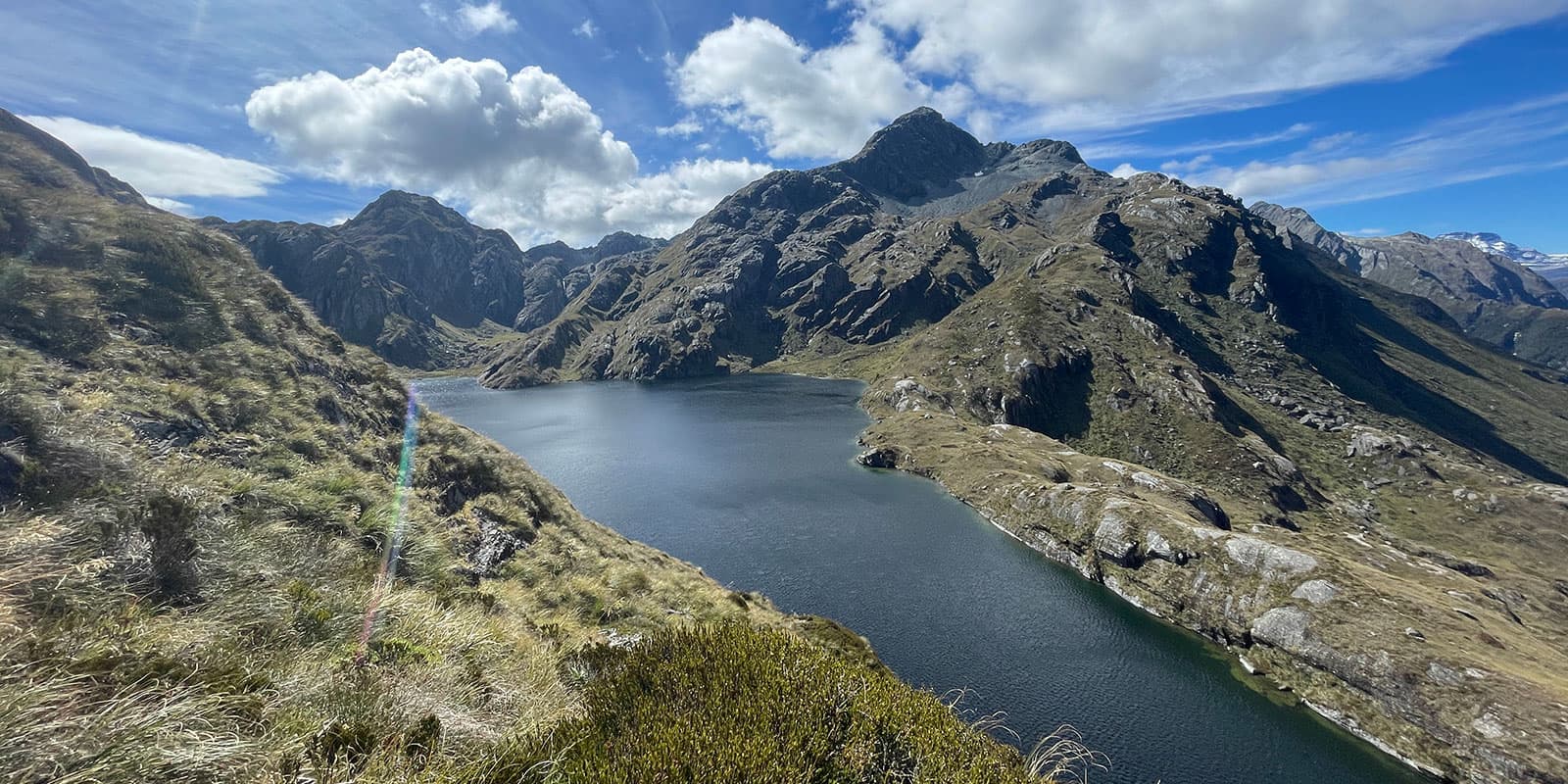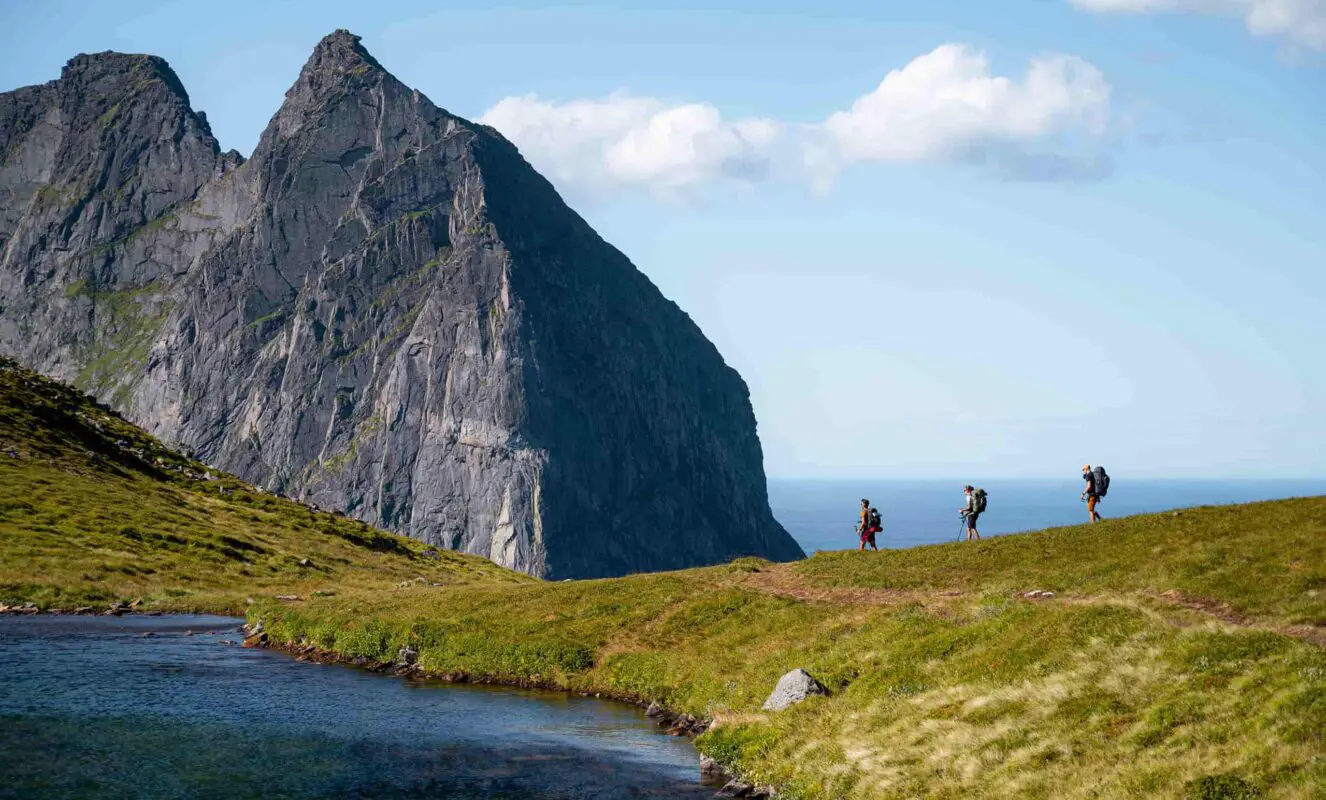Starting in the ancient city of Um Qais, this trail goes through the hills of northern Jordan. Surprisingly green, you’ll pass through olive groves, small villages, and dense forests. This area is rich in history, with ruins from the Roman and Byzantine eras. The section leads you to the Ajloun Castle, a 12th-century fortress with panoramic views of the countryside.
From Ajloun, the trail continues south through the Ajloun Forest Reserve. You’ll trek through oak and pine forests and pass traditional Jordanian villages where you will be treated to local hospitality. From here, you’ll hike toward Fuheis, where the terrain will turn into more valleys and hills.
Leaving Fuheis, you hike through the central highlands, diving into the Jordan Rift Valley. This section has stunning views of the Dead Sea and the surrounding mountains and passes through agricultural land. You’ll also go to the ancient city of Madaba, famous for its Byzantine mosaics in this section. Finally, you’ll end up in the hot springs of Wadi Zarqa Ma’in, a perfect spot to rest after hiking in the desert for so long already.
As you move on from the hot springs, you’ll hike to the historic city of Karak. On the way, you’ll walk across arid landscapes, deep gorges, and high plateaus. The trail will follow the ancient King’s Highway, passing by the famous Mujib Biosphere Reserve.
From Karak, you continue south through the Jordanian Highlands. This section is challenging because of its steep climbs and descents. However, the difficulty isn’t without reward. You’ll also pass through small villages and Bedouin camps, which will give you a glimpse into the traditional lifestyle of the local people, as well as finish in the Dana Biosphere Reserve, Jordan’s largest nature reserve.
One of the most scenic sections, this part of the trail takes you from Dana to the iconic city of Petra. You hike through the stunning Wadi Feynan with palm trees waving in the air above you, as you pass copper mines and beautiful rock formations. The trail leads you through the remote Sharah Mountains. As you approach Petra, the landscape becomes more rugged, with narrow canyons and towering cliffs. This section ends at the entrance to Petra, where you can explore the ancient Nabatean city carved into the rock.
From Petra, you head further south into the vast desert landscapes of Wadi Rum. This section is known for its wide-open spaces, dramatic sandstone mountains, and red sand dunes. You’ll see more Bedouin camps and ancient rock carvings here. Wadi Rum, also known as the Valley of the Moon, is a UNESCO World Heritage site and a highlight of the Jordan Trail. You’ll feel the silence and beauty of the desert, with opportunities for star-gazing. This is also a good place to plan an extra day for a camel ride if that’s exciting to you!
The final section of the Jordan Trail takes you from the desert of Wadi Rum to the coast of Aqaba. You hike through arid desert landscapes, passing through canyons and over rocky terrain. As you approach Aqaba, the landscape changes to coastal plains. The trail ends at the shores of the Red Sea, where you can relax on the beach and enjoy the vibrant marine life.



